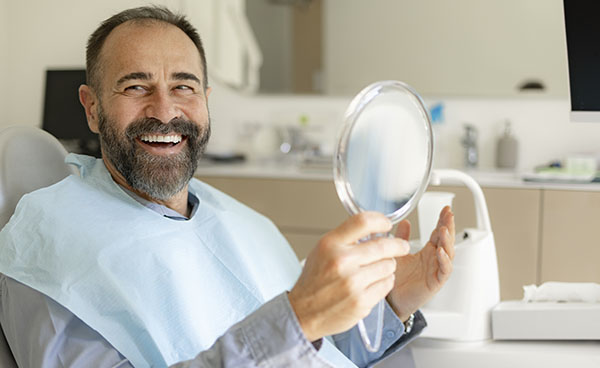Tooth whitening is more than just a matter of aesthetics when self-esteem comes into play. Dentist's word!
Did you know that your teeth are not naturally white? Tooth color varies from person to person, ranging from yellowish to grayish, even darkening with age. Beyond genetics, your lifestyle habits also come into play. If you smoke or eat foods that stain (coffee, tea, wine, chocolate, etc.), your teeth will reflect this over time.
So, at first glance, if your teeth are more or less white, no problem. But, for many, a certain level of self-confidence depends on the whiteness of their smile and especially how it's perceived, whether by colleagues and clients at work or friends at school. This is where dental whitening becomes a powerful ally.
Whitening solutions: at the drugstore or the dentist?
There are many products that promise to whiten teeth, from toothpastes to gums, mouthwashes and whitening strips at the drugstore. But do they all offer the same results as in-clinic teeth whitening and, above all, are they safe? Here's the lowdown.
Provided they are used according to the time and frequency instructions on the packaging, rest assured that all drugstore whitening products are safe. However, they work because the manufacturer adds abrasives (e.g. calcium carbonate or sodium bicarbonate) in low concentrations, so their effectiveness is limited to surface stains. Do you have visible crowns or veneers? Since the peroxide in reflective strips can't change their color, personalized whitening at the dentist's becomes a necessity.
Last but not least, whitening products should never be used to replace a professional cleaning, the first step before any whitening. If the Canadian Dental Association recommends consulting your dentist before starting any tooth whitening treatment, it's because it's imperative to determine whether tooth discoloration could have a medical cause.
The ABCs of whitening
The first rule of successful whitening is the same as that advocated by artists: the whites of your eyes should match the whites of your teeth. If there's a big contrast between the two, your teeth probably look duller than they really are. The good news is that as soon as you reduce the contrast, the whitening effect will be all the brighter.
If you're short on time, in-clinic whitening is quicker and allows you to progress several shades in a single visit. Ideally, you'll want to combine it with at-home treatments, in the form of trays adapted to the shape of your teeth, into which you simply add a peroxide gel in concentrations suited to your dental condition. Such whitening should maintain a long-lasting brilliance for 2 to 4 years, with the added benefit of avoiding over-frequent whitening, which can damage your enamel.






